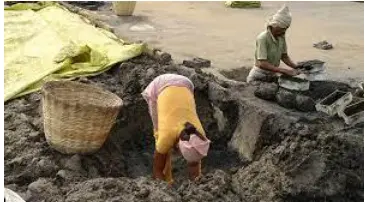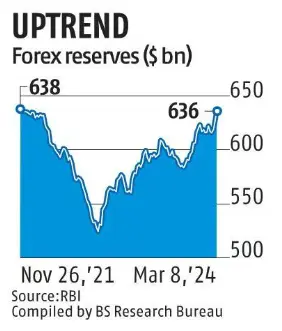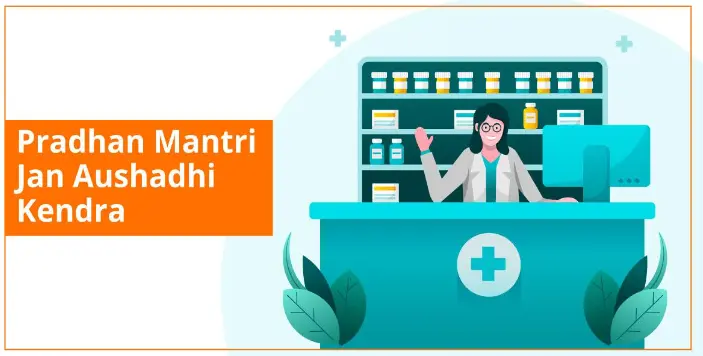Friday, 22nd March 2024
World Air Quality Report 2023
In News: According to the World Air Quality Report 2023 published by the Swiss organization IQ Air, India has been designated as the third most polluted country globally.
Key Highlights of the World Air Quality Report 2023
India's Air Quality Ranking:
- India ranked as the world's third most polluted country.
- Bangladesh and Pakistan surpassed India in pollution levels.
- Nine out of the top 10 most polluted cities in the world are from India.
- Delhi emerged as the world's most polluted capital city for the fourth consecutive time.
- Begusarai in Bihar labelled as the world's most polluted metropolitan area.
Health Impacts and WHO Guidelines:
- Approximately 136 million Indians (96% of the population) face PM2.5 concentrations higher than WHO's recommended levels.
- Over 66% of Indian cities reported annual averages higher than 35 µg/m³.
- PM2.5 pollution is linked to increased rates of heart attack, stroke, and oxidative stress.
- Seven countries met the WHO annual PM2.5 guideline, including Australia, Estonia, Finland, Grenada, Iceland, Mauritius, and New Zealand.
Global Air Quality:
- Africa remains the most underrepresented continent in air quality data.
- Some countries, like China and Chile, reported decreases in PM2.5 pollution levels.
- Pollution spreads across regions, emphasizing the need for international cooperation.
Global Impact of Air Pollution:
- Air pollution causes approximately seven million premature deaths annually worldwide.
- PM2.5 exposure leads to health issues such as asthma, cancer, stroke, and mental health complications.
- Elevated levels of fine particles can impair cognitive development in children and complicate existing illnesses.
WHO Air Quality Guidelines:
- The guidelines cover PM2.5, PM10, ozone (O3), nitrogen dioxide (NO2), sulfur dioxide (SO2), and carbon monoxide (CO).
- Updated in 2021, the guidelines aim to safeguard public health from the ongoing threat of air pollution.
|
UPSC Previous Year Questions Prelims (2016) Q. In the cities of our country, which among the following atmospheric gases are normally considered in calculating the value of the Air Quality Index?
Select the correct answer using the code given below: (a) 1, 2 and 3 only Ans: (b) Mains (2021) Q. Describe the key points of the revised Global Air Quality Guidelines (AQGs) recently released by the World Health Organisation (WHO). How are these different from its last update in 2005? What changes in India’s National Clean Air Programme are required to achieve revised standards? |
Source: TH
Pusa Basmati Rice
In News: As per IARI, the unauthorized sales and cultivation of IARI varieties in Pakistan began with the introduction of Pusa Basmati-1121 (PB-1121).
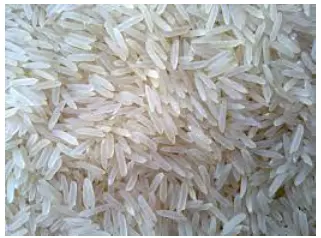
Basmati Crop Improvement Program:
- Basmati rice, known for its unique grain and cooking qualities, has undergone genetic improvement facilitated by IARI.
- The release of high-yielding Basmati rice varieties such as Pusa Basmati 1 in 1989 has significantly enhanced productivity and reduced growth duration.
- IARI has introduced several high-yielding Basmati varieties and hybrids, including Pusa Basmati 1121, Improved Pusa Basmati 1, etc.
- These advancements have contributed to approximately 90% of India's projected $5.5 billion exports of aromatic rice in 2023-24.
Characteristics of Basmati Rice Varieties Developed at IARI:
- Pusa Basmati 1121: Recognized as the world's longest Basmati rice, with a maturity period of 145 days and an average yield of 45 q/ha.
- Pusa Basmati 1509: Developed from a cross between Pusa 1121 and Pusa 1301, maturing in 115 days with an average yield of 5 tons/ha.
- Improved Pusa Basmati 1 (Pusa 1460): First product of molecular breeding in rice in India, featuring resistance to bacterial leaf blight.
- Pusa Basmati 6 (Pusa 1401): Offers superior grain quality and improved yield compared to Pusa 1121.
- Pusa RH10: World's first superfine grain aromatic rice hybrid, released in 2001 for cultivation in specific regions.
Registration of Pusa Basmati Rice in India:
- All varieties are notified under the Seeds Act 1966 for cultivation within the designated Geographical Indication (GI) area of Basmati rice in India, covering 7 northern states.
- They are further registered under the Protection of Plant Varieties and Farmers’ Rights Act 2001, allowing only Indian farmers to sow, save, re-sow, exchange, or share the seeds of protected/registered varieties.
Illegal Cultivation of Pusa Basmati Rice in Pakistan:
- Varieties such as Pusa Basmati 1121 have been illegally cultivated in Pakistan under different names.
- Pakistani seed firms procure seeds from fields across the border or wholesale mandis in Punjab or Haryana for multiplication and selling within two years of release in India.
Source: IE
New Electric Vehicle Policy 2024
In News: In a notable development, the Government of India has approved a strategic policy with the aim of establishing India as a leading manufacturing center for electric vehicles (EVs).
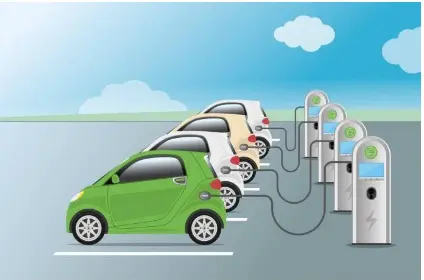
Highlights of the Policy:
- Duty Reduction for EV Imports:
- Customs duty rate reduced to 15% on Completely Knocked Down (CKD) units of EVs with a minimum CIF value of USD 35,000 for 5 years.
- Import Cap and Investment Prerequisites:
- Imported EVs capped at 8,000 per year.
- Manufacturers required to invest a minimum of Rs 4,150 crore to avail duty concessions, with no ceiling on maximum investment.
- Manufacturing and Value Addition Requirements:
- Companies must establish operational facilities within 3 years and achieve a minimum domestic value addition (DVA) of 25% within the same period, escalating to 50% within 5 years.
- Maximum Import Allowance:
- Investment exceeding USD 800 Mn allows import of up to 40,000 EVs, not exceeding 8,000 per year, with carry-over of unused limits.
- Duty Limit:
- Total duty waived capped at the investment made or Rs 6484 Cr, whichever is lower.
- Bank Guarantees:
- Guarantee return upon achieving 50% DVA and investing at least Rs 4,150 crore or to the extent of duty foregone in 5 years, whichever is higher.
Key Benefits:
- Stimulates innovation and progress in electric vehicle technology.
- Promotes indigenous manufacturing, aligning with Make in India campaign.
- Reduces crude oil imports and narrows trade deficit.
- Contributes to mitigating air pollution, especially in urban areas.
- Aligns with India's climate goals of reducing emissions intensity by 45% by 2030 and achieving net-zero emissions by 2070.
Impact:
- Aims to attract global players like Tesla by offering investment incentives and import duty reductions.
- Fulfills demand for tariff concessions, signaling India's commitment to attracting foreign investment in the EV sector.
- Poised to make the EV sector a major category within the automotive industry in India.
Other Initiatives Related to Electric Vehicles in India:
- Electric Mobility Promotion Scheme (EMPS) 2024.
- Phased Manufacturing Programme (PMP).
- National Mission on Transformative Mobility and Storage.
- EV30@30 campaign.
- Faster Adoption and Manufacturing of (Hybrid and) Electric Vehicles (FAME) – I and II.
- Production Linked Incentive (PLI) scheme for Automobile and Auto Components.
- National Electric Mobility Mission Plan (NEMMP).
Challenges for the EV Market in India:
- Charging Infrastructure.
- High Upfront Cost of EVs.
- Lack of Service Options.
- Supply Chain Challenges.
- Policy Uncertainty.
- Subsidy Dependence.
- Uncertain Consumer Behavior.
- Lack of Standardization.
Way Forward:
- Expand charging infrastructure network.
- Implement battery swapping policy.
- Promote private sector innovation in battery technology.
- Conduct educational campaigns.
- Offer attractive leasing and rental schemes.
- Implement regulatory frameworks.
- Promote smart digital solutions.
|
UPSC Previous Year Questions Mains (2019) Q. How is efficient and affordable urban mass transport key to the rapid economic development in India? |
Source: PIB
Model Code of Conduct - Edukemy Current Affairs
In News: The recent announcement of voting dates for the Lok Sabha elections 2024 by the Election Commission of India (ECI) has triggered the activation of the Model Code of Conduct (MCC), highlighting its pivotal role in electoral governance.
Model Code of Conduct (MCC) and its Evolution
About MCC:
- The MCC is a consensus document agreed upon by political parties to regulate their conduct during elections and ensure fair practices.
- It empowers the Election Commission (EC) under Article 324 of the Constitution to supervise and conduct free and fair elections to Parliament and State Legislatures.
- Operational from the announcement of election schedules until result announcement, it prohibits the government from making any announcements or promises that may influence voters.
- Despite lacking statutory backing, the MCC's enforcement has strengthened over the years due to strict implementation by the EC.
Evolution of MCC:
- The concept of a code of conduct for elections emerged in Kerala in 1960, later formalized by the Election Commission in 1974.
- Initially applicable to political parties and candidates, it was revised in 1979 to include regulations for ruling parties' behavior.
- Since then, the MCC has undergone several revisions, with the latest in 2014, to adapt to changing electoral dynamics.
Key Provisions of MCC:
- General Conduct: Prohibits activities that may create tensions based on caste, community, religion, or language.
- Meetings and Processions: Requires parties to inform authorities about meeting venues and prevent clashes between processions.
- Polling Day: Restricts entry into polling booths to authorized individuals and mandates identity slips without party affiliations.
- Party in Power: Imposes restrictions on government activities to prevent misuse of power during elections.
Issues Associated with MCC:
- Enforcement Challenges: Inconsistent enforcement due to lack of statutory backing.
- Ambiguity: Some provisions may be vague, leading to interpretation issues.
- Limited Scope: Critics advocate for expanding MCC coverage to address new electoral challenges.
- Timing Issues: Misconduct outside election periods may go unchecked.
- Impact on Governance: Restrictions on government activities during elections may hinder governance.
Way Forward:
- Strengthen Enforcement: Enhance mechanisms for enforcing MCC guidelines.
- Clarify Provisions: Improve clarity and specificity to minimize ambiguity.
- Expanding Scope: Consider addressing emerging issues like digital campaigning.
- Legalizing MCC: Evaluate proposals to provide statutory backing for enhanced enforceability.
- Public Awareness: Launch campaigns to educate stakeholders about MCC compliance.
- Continuous Review: Establish a framework for regular evaluation and adaptation.
Conclusion:
MCC plays a crucial role in ensuring fair elections but faces challenges in enforcement and scope. Legalizing it could empower the EC to uphold democratic integrity effectively.
|
UPSC Previous Year Questions Prelims (2017) Q. Consider the following statements:
Which of the statements given above is/are correct? (a) 1 and 2 only Ans: (d) Mains (2022) Q. Discuss the role of the Election Commission of India in the light of the evolution of the Model Code of Conduct. |
Source: IE
Brucethoa ISRO
In News: A newly identified species of deep-sea isopod found off the coast of Kollam has been named after ISRO.
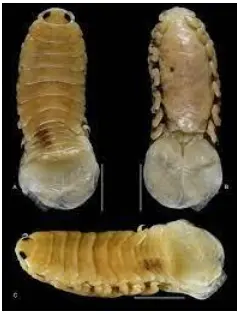
About Brucethoa ISRO
- Discovery of Brucethoa ISRO
- A new species of deep-sea isopod, named Brucethoa ISRO, was found off the Kollam coast, Kerala.
- It was recovered from the gill cavity base of the Spinyjaw greeneye, a type of marine fish.
- Significance
- Named in honor of the Indian space agency's achievements, specifically its successful space missions.
- Represents the second documented species within the Brucethoa genus in India.
- Physical Characteristics
- Females are larger, reaching lengths of about 19 mm and widths of 6 mm, while males are approximately half their size.
- About Isopods
- Isopods are an order of invertebrates within the crustacean group, which includes crabs and shrimp.
- Estimated to comprise around 10,000 species, isopods inhabit various habitats worldwide, from mountains to deep sea environments.
- Features
- Display remarkable morphological diversity, ranging from microorganisms to half-meter-long species.
- While they vary greatly in appearance, all isopods share common traits such as two pairs of antennae, compound eyes, and four sets of jaws.
- Their body comprises seven segments, each equipped with a pair of walking legs, and a short abdominal section with six segments, known as "pleons," fused into a tail section.
- Habitat
- Approximately half of all known isopod species reside in marine environments, with others found in coastal waters and on land.
- While most isopods are free-living, some marine species exhibit parasitic behavior, often infesting other animals.
Source: TH
World Happiness Report - Edukemy Current Affairs
In News: According to the latest UN-sponsored World Happiness Report, Finland has secured the title of the world's happiest country for the seventh consecutive year.
About World Happiness Report
- The annual World Happiness Report is a collaboration between Gallup, the Oxford Wellbeing Research Centre, the UN Sustainable Development Solutions Network (SDSN), and the World Happiness Report's Editorial Board.
- It relies on global survey data collected from individuals, including their own assessments of happiness, along with economic and social indicators.
- Six key factors are considered in the report: social support, income, health, freedom, generosity, and absence of corruption.
- The report calculates a happiness score based on an average of data collected over a three-year period.
- Highlights of the World Happiness Report 2024 include:
- Nordic countries maintaining dominance in the top rankings, with Finland securing the top position for the seventh consecutive year.
- Other top-ranking countries include Denmark, Iceland, Sweden, Israel, Netherlands, Norway, Luxembourg, Switzerland, and Australia.
- Afghanistan remains at the bottom of the list among the 143 surveyed countries.
- The United States and Germany have dropped out of the top 20 happiest nations, landing at 23rd and 24th place, respectively, marking the first time in over a decade.
- Notably, the happiest countries no longer include any of the world's most populous nations, except for the Netherlands and Australia.
- India's ranking in the happiness index is 126th, unchanged from the previous year.
- In India, older age is associated with higher life satisfaction, particularly among older men, those in higher age brackets, presently married individuals, and those with an education.
- However, older women in India report lower life satisfaction compared to their male counterparts.
- Satisfaction with living arrangements, perceived discrimination, and self-rated health are identified as the top three predictors of life satisfaction.
Source: TOI
Earth Hour - Edukemy Current Affairs
In News: The power distribution companies (discoms) in the national capital are actively preparing to ensure the success of the upcoming 'Earth Hour' event.
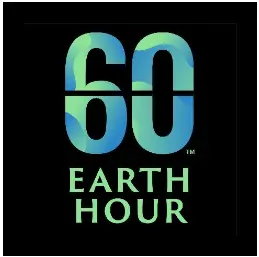
About Earth Hour
- Global Grassroots Movement: Earth Hour is a global grassroots movement that aims to mobilize people to address environmental issues and safeguard the planet.
- Organized by WWF: The initiative is organized by the World Wildlife Fund (WWF), a renowned environmental conservation organization.
- Origin: Earth Hour originated in Sydney, Australia, in 2007 as a symbolic event involving turning off lights for one hour. Since then, it has expanded into a worldwide movement spanning over 190 countries and territories.
- Annual Event: Earth Hour is observed annually towards the end of March.
- Lights-Out Initiative: Participants are encouraged to switch off all lights for one hour, from 8:30 p.m. to 9:30 p.m. local time, as a symbolic gesture to raise awareness about climate change challenges and promote energy conservation.
- Involvement of Governments and Companies: Governments and companies also participate in Earth Hour by turning off non-essential lights in their buildings, monuments, and landmarks. This collective action aims to highlight the impact of energy consumption on the environment.
- Symbolic Gesture: The 'lights off' moment during Earth Hour serves as a symbolic act that unites people globally in demonstrating their support for the planet and serves as a reminder of the urgent environmental issues we face.
Source: BS
World Forest Day
In News: March 21 is observed annually as World Forest Day, alternatively known as International Day of Forests.
About World Forest Day
- Significance
- Celebrated annually to highlight the importance of forests and trees in our lives.
- Aims to raise awareness about the value of various types of forests.
- Objective
- Encourages countries to participate in regional, global, and local initiatives.
- Promotes activities such as planting campaigns to support forests and trees.
- Organizers
- Coordinated by the Food and Agriculture Organization of the United Nations (FAO) and the United Nations Forum on Forests.
- Observance Date
- World Forest Day is observed on March 21 each year.
History
- Origin
- Proposed in 1971 by the General Assembly of the European Confederation of Agriculture.
- March 21 was selected by the United Nations due to its alignment with the Vernal Equinox and Autumn Equinox in the northern and southern hemispheres.
Theme for this year
"Forests and Innovation: New Solutions for a Better World"
Source: TH
Cocoa
In News: A scarcity of cocoa beans has resulted in a virtual halt of operations at processing facilities in Ivory Coast and Ghana, which together account for 60% of global production.
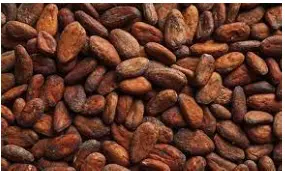
About Cocoa
- Significance: Cocoa is a crucial plantation crop cultivated globally for chocolate production.
- Origin: Native to the Amazon basin of South America, cocoa thrives in humid tropical climates.
- Growing Regions: Primarily cultivated in regions around the equator, between 20 degrees latitude north and south.
- Climatic Requirements
- Altitude: Suited for cultivation up to 300 meters above mean sea level.
- Rainfall: Requires an annual rainfall ranging between 1500-2000 mm.
- Temperature: Ideal temperature range is 15°-39°C, with an optimum of 25°C.
- Soil: Flourishes in deep, well-drained soils, predominantly clay loam and sandy loam, with a pH range of 6.5 to 7.0.
- Shade Preference: Historically evolved as an under-storey crop in Amazonian forests, cocoa cultivation benefits from 50% available light.
- Major Producing Regions
- Approximately 70% of the world's cocoa beans originate from four West African nations: Ivory Coast, Ghana, Nigeria, and Cameroon.
- Cocoa Cultivation in India
- In India, cocoa is primarily grown in Karnataka, Kerala, and Tamil Nadu, often as an intercrop with Arecanut and Coconut.
Source: DTE
Subduction Zone
In News: A recent study conducted by scientists in Portugal suggests that the subduction zone of the 'Ring of Fire' beneath the Gibraltar Strait could result in the closure of the Atlantic Ocean within the next 20 million years.
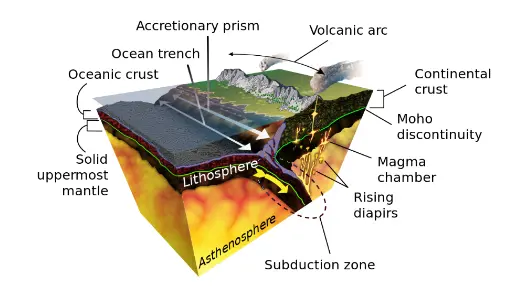
About Subduction Zone
- A subduction zone is a location where two of the Earth's tectonic plates collide, with one plate sliding beneath the other.
- Tectonic plates are segments of the Earth's rigid outer layer that move gradually across the planet's surface over vast periods.
- This phenomenon is central to plate tectonics, the theory that Earth's shell segments slide over the lower mantle, carrying continents with them.
- The lithosphere, comprising the Earth’s crust and the upper portion of the mantle, forms this outer layer.
- At a subduction zone, when one tectonic plate slides beneath another, the lithosphere material bends downward into the hot mantle.
- This tectonic activity can generate some of Earth’s most intense earthquakes, tsunamis, and volcanic eruptions.
- Subduction commonly occurs due to the collision of two types of lithosphere: continental and oceanic.
- When oceanic lithosphere collides with continental lithosphere, the denser oceanic portion sinks below the buoyant continental lithosphere.
- Subduction can also happen when both colliding plates consist of oceanic material, with older, denser oceanic lithosphere sinking beneath younger, lighter lithosphere.
- New oceanic lithosphere forms at plate boundaries, allowing hot mantle material to rise. As it cools and becomes denser, older oceanic lithosphere can sink.
- The sinking plate, or "slab," typically bends at an angle of approximately 30 degrees from Earth's surface.
- Sometimes, subduction initiates spontaneously as the lithosphere becomes unstable and collapses under gravity, forming a subduction zone.
- Subduction zones form a horseshoe shape around the Pacific Ocean, known as the "Ring of Fire," extending from the USA and Canada to New Zealand and South America.
- The "Ring of Fire" is the most seismically and volcanically active zone globally, responsible for over 80% of the largest earthquakes and most active volcanoes on Earth.
Source: TOI
Share the article
Edukemy’s Current Affairs Quiz is published with multiple choice questions for UPSC exams
MCQ
Get Latest Updates on Offers, Event dates, and free Mentorship sessions.

Get in touch with our Expert Academic Counsellors 👋
FAQs
UPSC Daily Current Affairs focuses on learning current events on a daily basis. An aspirant needs to study regular and updated information about current events, news, and relevant topics that are important for UPSC aspirants. It covers national and international affairs, government policies, socio-economic issues, science and technology advancements, and more.
UPSC Daily Current Affairs provides aspirants with a concise and comprehensive overview of the latest happenings and developments across various fields. It helps aspirants stay updated with current affairs and provides them with valuable insights and analysis, which are essential for answering questions in the UPSC examinations. It enhances their knowledge, analytical skills, and ability to connect current affairs with the UPSC syllabus.
UPSC Daily Current Affairs covers a wide range of topics, including politics, economics, science and technology, environment, social issues, governance, international relations, and more. It offers news summaries, in-depth analyses, editorials, opinion pieces, and relevant study materials. It also provides practice questions and quizzes to help aspirants test their understanding of current affairs.
Edukemy's UPSC Daily Current Affairs can be accessed through:
- UPSC Daily Current Affairs can be accessed through Current Affairs tab at the top of the Main Page of Edukemy.
- Edukemy Mobile app: The Daily Current Affairs can also be access through Edukemy Mobile App.
- Social media: Follow Edukemy’s official social media accounts or pages that provide UPSC Daily Current Affairs updates, including Facebook, Twitter, or Telegram channels.

